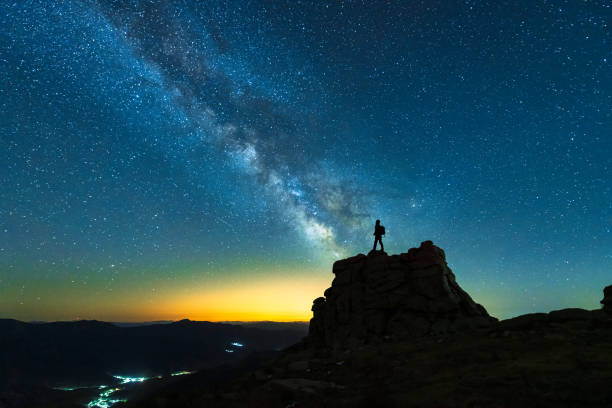The Cannibalistic Universe: Do Stars Consume Stellar Snacks or Devour Planetary Feasts?
For millennia, we've gazed at the twinkling tapestry of stars, imagining vibrant worlds orbiting them. But recent discoveries paint a more complex picture - a universe where stars aren't just benevolent beacons but celestial giants with a taste for the occasional planetary snack. Buckle up, space voyagers, because we're diving into the fascinating and slightly unsettling world of stellar cannibalism.
The Celestial Food Chain: A Matter of Size Matters
Not all stars are created equal. Our Sun, a majestic yellow dwarf, seems content to bathe its planetary system in life-giving light. But giants lurk in the cosmic distance, behemoths like red dwarfs and supermassive black holes. It's these stellar leviathans that exhibit the most disturbing dining habits.
Red Dwarfs: The Sneaky Snackers
Red dwarfs, the most common star type in the Milky Way, are much cooler and dimmer than our Sun. Their habitable zones, the sweet spot where liquid water can exist, are incredibly close. This proximity can be a double-edged sword for orbiting planets. Tidal forces from the red dwarf can lock a planet's rotation, forcing one side to face perpetual scorching heat while the other remains eternally frozen.
But the real danger lies in red dwarfs' stellar activity. These stars are prone to violent flares and coronal mass ejections that can strip away a planet's atmosphere, leaving behind a barren wasteland. In some cases, the intense radiation and stellar wind could erode a planet's surface over time, potentially leading to the gradual consumption of its very being.
Supermassive Black Holes: The Cosmic Gluttons
At the center of most galaxies lurks a supermassive black hole, a monster with a gravitational pull so intense that not even light can escape its grasp. Planets venturing too close are ripped apart by tidal forces, shredded into cosmic dust. Black holes themselves don't actively "eat" in the traditional sense, but they certainly have a way of making planets disappear.
The Smoking Gun: Unveiling Stellar Feasting
 How do we know stars are indulging in these cosmic banquets? Astronomers are like celestial detectives, piecing together clues. One smoking gun is the presence of lithium in a star's atmosphere. Lithium is readily destroyed by stellar processes, so its presence suggests an external source. This source? Perhaps a devoured planet rich in lithium, its remnants now swirling within the star.
How do we know stars are indulging in these cosmic banquets? Astronomers are like celestial detectives, piecing together clues. One smoking gun is the presence of lithium in a star's atmosphere. Lithium is readily destroyed by stellar processes, so its presence suggests an external source. This source? Perhaps a devoured planet rich in lithium, its remnants now swirling within the star.
Another clue comes from the chemical composition of stars in binary systems. If the compositions differ significantly, it could indicate that one star has gobbled up material from its companion, potentially including debris from a planetary disk.
The Implications: A Universe in Flux
The ramifications of stellar cannibalism are vast. It challenges our understanding of planetary system formation and evolution. If planets are doomed to be devoured by their parent stars, then the potential for life-bearing worlds seems to shrink dramatically.
However, the story isn't entirely bleak. Some theories suggest that stellar cannibalism can actually contribute to the birth of new planets. Material ripped from an old, destroyed planet could be redistributed, forming the building blocks for new celestial bodies further out in the system.
The Future of the Feast: A Universe of Possibilities
 The question of stellar cannibalism continues to be a hot topic in astronomy. As our observational tools become more sophisticated, we'll likely uncover even more examples of stars indulging in their cosmic appetites. It's a reminder that the universe is a dynamic place, a celestial dance where creation and destruction are two sides of the same coin.
The question of stellar cannibalism continues to be a hot topic in astronomy. As our observational tools become more sophisticated, we'll likely uncover even more examples of stars indulging in their cosmic appetites. It's a reminder that the universe is a dynamic place, a celestial dance where creation and destruction are two sides of the same coin.
Beyond the Cannibalism: A Universe of Stellar Interactions
It's important to remember that not all interactions between stars and planets are destructive. Stars can influence planetary formation by shepherding dust and gas into protoplanetary disks. Additionally, some interactions can lead to the exchange of material between planets, potentially seeding them with the essential ingredients for life.
From Cosmic Cannibals to Celestial Chefs?
The image of stars feasting on planets might be unsettling, but it also highlights the interconnected nature of the universe. Every star, every planet, is a part of this grand cosmic story. Perhaps, with further exploration, we'll discover that stellar interactions aren't just about destruction, but about the complex recipe that leads to the creation of habitable worlds and the potential for life to flourish.
So, the next time you gaze at the stars, remember – the universe is a place of incredible beauty and fascinating complexity. It's a place where stars can be both nurturers and devourers, where destruction paves the way for creation. The question remains, will we find ourselves amidst a cosmic feast or a celestial haven? Only time, and our continued exploration, will tell.
































